Research studies in the area of substance abuse often lead to new strategies for treatment, or the tossing out of treatments that are proven ineffective. Research is also used to show how trends in the use of certain substances change over time, or among different segments of the population. Public policy requires information that accurately reflects the trends in substance use in order to establish laws and regulations that discourage substance abuse. A study illustrates the inaccuracies that plague state reporting agencies when determining the cause of death in a traffic accident.
According to the study by National Institute on Alcohol Abuse and Alcoholism (NIAAA) researchers there were more than 450,000 U.S. traffic deaths between 1999 and 2009. In many of these cases alcohol was involved but was not referenced on the death certificates as cause of death. While correct causes of death on death certificates may seem trivial, injuries remain the leading cause of death in the U.S. for individuals under the age of 45, according to the Centers for Disease Control and Prevention.
Importance Of Understanding Alcohol’s Role In Car Accidents
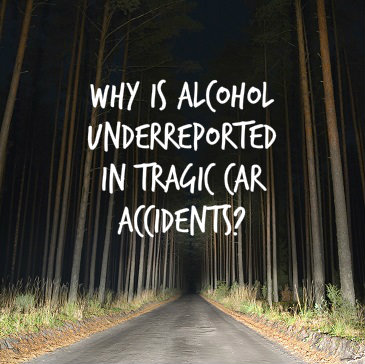 Study leader Ralph Hingson, Sc.D. of the NIAAA stresses the importance of having a clear understanding of alcohol’s role in the leading cause of death for an age group. Only with correct information can officials determine whether policies aimed at reducing alcohol-related deaths are effective. The size of the problem must be measured, tracked and then assessed in order to best create prevention and intervention measures.
Study leader Ralph Hingson, Sc.D. of the NIAAA stresses the importance of having a clear understanding of alcohol’s role in the leading cause of death for an age group. Only with correct information can officials determine whether policies aimed at reducing alcohol-related deaths are effective. The size of the problem must be measured, tracked and then assessed in order to best create prevention and intervention measures.
The researchers started by looking at all traffic deaths because the records are more accurate when compared with other types of accidental death. In approximately half of all U.S. states there is a requirement that the fatally injured driver be tested for blood alcohol levels. This information is then entered into the National Highway Traffic Safety Administration’s Fatality Analysis Reporting System database. The database results were then compared with death certificates from across the U.S.
The researchers found that the role of alcohol in traffic deaths in the decade studied was significantly underreported. Only three percent of the death certificates listed alcohol as a contributing cause of death, while the database rated 21 percent of deaths as legally drunk.
States Reporting Alcohol In Accidents Differs – Importance Of Best Practices
The findings were not consistent from state to state. In some states alcohol was rarely included on death certificate information, such as in Maryland, New Hampshire, Nevada and New Jersey. Other states, including Iowa, Minnesota, Kansas and Delaware, were better about accurately reporting alcohol’s role in the death.
The researchers noted that the discrepancy in reporting could be due to long waiting periods for receiving blood alcohol level test results. In most cases a coroner or medical examiner is required to file a death certificate within three to five days, which may be sooner than a toxicology report can be received.
The researchers stressed the importance of determining which practices are followed by states that seem to be reporting more accurately. Establishing best practices for other states to follow may make reporting on traffic fatalities involving alcohol more accurate.
Having laws in place requiring alcohol testing did not seem to result in better reporting. However, Hingson says that the results illustrate the wide gap between the number of accidental deaths related to alcohol consumption and those that are reported.
Social media has revolutionized the way we communicate, but can it be used to pick out at-risk areas for drug abuse, risky behaviors and HIV? According to a new study, the answer may well be yes. There are limitations to the approach, but our penchant for broadcasting our thoughts, intended actions and feelings through publicly accessible sites like Twitter could provide a pre-emptive warning about areas particularly at risk for a wide range of health issues. In the past, the approach has been suggested as a method of predicting influenza outbreaks, but the new study suggests that a spike in the number of people using key phrases like “get high” or “sex” in a particular area may be used to determine where to target public health programs relating to drug use and HIV.
The study comes from a new center at UCLA intended as a multi-disciplinary effort to investigate the potential of social media and cell phones to enable prediction (and hopefully the changing) of behavior in the population. The new piece of research is primarily focused on the prevention of HIV, but one of the key ideas the research was based on is the link between risk behaviors like sex or drug use and how they spread. The methodology of the study was fairly straightforward: collect a lot of tweets, use an algorithm to search for words and phrases indicating risky behavior and drug use (with a focus primarily on stimulant use) and plot them on a map. The finalized map was then compared to HIV data to see if the prime areas of suggestive tweeting correlated with the prevalence of HIV. In total, the researchers collected over 550 million tweets from May to December 2012, and compared the final map to an interactive map of HIV prevalence in the US. However, the most up-to-date information available when the researchers were conducting the study was from 2009.
Does Twitter Work For Tracking?
 The sample they analyzed contained over 8,500 tweets relating to sexual behavior and over 1,300 suggesting stimulant use. By state, California, Texas, New York and Florida had the biggest proportion of suggestive tweets, but the main hotspots identified in terms of the raw number of tweets identified were the District of Columbia, Delaware, Louisiana and South Carolina. The largest per-capita rates (taking state populations into account) were found in Utah, North Dakota and Nevada. However, for the purposes of the analysis, the focus was on the location of tweets in terms of counties, since state-level data wouldn’t offer much potential for a truly targeted approach.
The sample they analyzed contained over 8,500 tweets relating to sexual behavior and over 1,300 suggesting stimulant use. By state, California, Texas, New York and Florida had the biggest proportion of suggestive tweets, but the main hotspots identified in terms of the raw number of tweets identified were the District of Columbia, Delaware, Louisiana and South Carolina. The largest per-capita rates (taking state populations into account) were found in Utah, North Dakota and Nevada. However, for the purposes of the analysis, the focus was on the location of tweets in terms of counties, since state-level data wouldn’t offer much potential for a truly targeted approach.
The researchers then compared their findings to the data on HIV prevalence, and found a statistically significant relationship between the locations with the most risk-related tweets and reported cases of HIV. Although this is very encouraging, a big issue with the study is that the HIV data came from 2009, three years before the tweets were collected. While it stands to reason that the areas with the largest numbers of risk-related tweets would be those with the greatest prevalence of HIV, the problem of old data does hold back the implications of this research. If the prevalence of HIV didn’t change much over the intervening three years, then the study shows a correlation, but it doesn’t necessarily mean it’s possible to predict an outbreak.
Social Media Strategy In The Future
The biggest problem with the approach from the new study is getting up-to-date information about HIV prevalence, or indeed that of any condition or issue being monitored. The researchers suggest that for the approach to work there would need to be some form of “gold standard” for regularly updated information, and this is well within the realm of possibility. If a similar study conducted with up-to-date data comes up with comparable findings, there will undoubtedly be more incentive to invest money in the approach.
The other issue with the potential for applying this approach on a larger scale is the sheer volume of data required. The research used over half a billion tweets for a period of six months, and each one had to be checked using the algorithm to produce the final data. It’s called “big data” for obvious reasons, but it’s becoming increasingly important because we can theoretically collect and use this much information for the purposes of monitoring potential disease outbreaks. Studies like this show that it’s possible, but whether we’re really ready to start monitoring huge volumes of data like this all the time and for myriad purposes is another matter entirely.
Prospective Prevention Of Drug Addiction
If we set aside the organizational and logistical challenges presented by this approach—since it will be feasible in the near future—it could have profound consequences for how we target treatment, education and prevention programs for drug addiction. It’s been suggested as a method to help prevent the use of Adderall as a “study drug,” and if applied as a more wide-ranging strategy, it could help us identify areas where drug use is burgeoning. Effectively, it presents the very real possibility for the widespread prevention of drug addiction, not just the treatment of it.
Read How To Determine If you Have A Social Media Addiction
21 Apr 2014
What Are The Marijuana Regulations In Colorado?
In the November 2013 elections, Colorado voted to legalize recreational marijuana sales, and the first stores licensed to sell marijuana opened for business Jan. 1. Nevertheless, Colorado’s new laws do not mean that marijuana use is now free from regulation. On the contrary — the process of selling, purchasing and using marijuana is tightly controlled, especially as the state evaluates the manageability and success of legalization.
Selling And Purchasing Marijuana
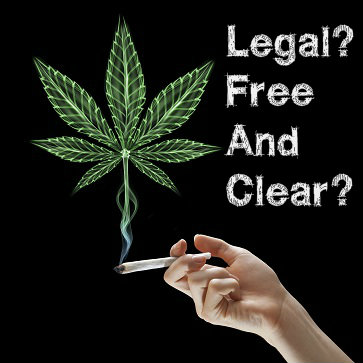 In addition to applying for and receiving an official license to sell recreational marijuana, there are other regulations by which retail locations have to abide. The state has mandated that marijuana retailers cannot open earlier than 8 a.m., or remain open after midnight. Many cities are setting even more restrictive hours; for example, Denver stores that sell recreational marijuana are required to close at 7 p.m.
In addition to applying for and receiving an official license to sell recreational marijuana, there are other regulations by which retail locations have to abide. The state has mandated that marijuana retailers cannot open earlier than 8 a.m., or remain open after midnight. Many cities are setting even more restrictive hours; for example, Denver stores that sell recreational marijuana are required to close at 7 p.m.
These stores also have to abide by security camera regulations. Each location is required to have a security camera pointed at the register with a picture that is clear and close enough for facial recognition.
Marijuana retailers are required to check the state-issued I.D. of customers to confirm their state of residence. They may sell up to one ounce of marijuana to Colorado residents, and one-quarter ounce to out-of-state residents.
State law does not permit any private individual to possess more than one ounce of store-bought recreational marijuana at a time. However, there are no regulations in place that prohibit people from purchasing marijuana from multiple stores in one day. One of the biggest concerns for law enforcement officers is how to prevent people from acquiring much more than the legal limit by visiting multiple stores and purchasing the full legal amount each time. This is part of the reason that stores are required to have security cameras through which individuals can be clearly identified.
The regulations about where customers are permitted to use their products are also fairly restrictive, and a bit confusing. Smoking marijuana is forbidden wherever cigarette smoking is banned, and any consumption of marijuana is forbidden in public areas like parks. Hotels and apartments are permitted to allow or ban smoking marijuana just as they can regulate cigarette smoking. Currently, it’s not clear whether private establishments like restaurants or coffee shops will be allowed to have discreet areas for marijuana use.
Consuming marijuana on federal land within Colorado is also forbidden. This includes most ski slopes, and all national parks and national forests. People who decide that these wide-open spaces seem ideal for discreetly consuming marijuana products should be aware that they would be subject to federal penalties if they were caught.
For the moment, privately owned residences in Colorado are the only places where recreational marijuana use is definitely permitted.
Some Cities Refuse To License Marijuana Sales
Under the new state regulations governing recreational marijuana, individual communities (cities and counties) in Colorado are allowed to refuse to license marijuana dealers and therefore prohibit recreational marijuana sales within their city or county limits.
Cities that have chosen to ban recreational marijuana sales include Colorado Springs, the state’s second largest city. Several other major cities, including Aurora and Boulder, are provisionally banning marijuana sales until local leaders make decisions about licensing regulations and monitoring. Many of these communities feel that the weeks between the November 2013 elections and the official start of marijuana sales on the first day of 2014 did not give them enough time to make decisions about intelligent implementation.
Some cities have not explicitly banned marijuana sales, but have created regulations that make it practically impossible for marijuana retailers to open. For example, at least one community requires prospective marijuana retailers to be so far away from any school property that they would be pushed to the very edges of town, where a new business would almost certainly fail.
Some of the approximately two-dozen cities that do not currently permit recreational marijuana sales have issued two-year moratoriums, and will reconsider the issue when those two years are up. Many of these communities want to wait to see how effective the state can be at regulating, licensing and monitoring establishments before potentially giving the go-ahead to marijuana sales.
14 Apr 2014
Is The ‘War On Drugs’ Nearing The End?
It’s been more than 40 years since the “war on drugs” became a popular term across the United States. Yet, arguably, the U.S. has taken a combative approach to drug use for much longer than that, beginning with the passing of the Harrison Act in 1914. This war on drugs has involved the total prohibition of many drugs, and the criminalization of drug use and addiction. However, there have been signs in the last several years that the prohibition-and-penalty approach to curbing drug use is starting to fall out of favor.
The Harrison Act
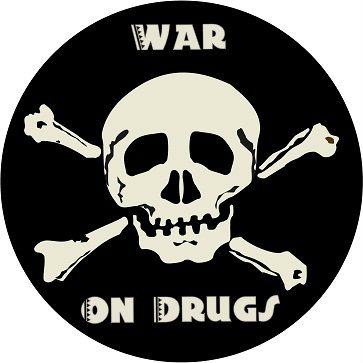 The Harrison Narcotics Tax Act of 1914 made it illegal to sell opiates or cocaine without a license. On the surface, the new law appeared to be about the moderate regulation and taxation of narcotics, rather than about outlawing them. However, the effect was to make it impossible to legally obtain cocaine or opiates. From this time on, drug users were forced to obtain their substance of choice on the black market.
The Harrison Narcotics Tax Act of 1914 made it illegal to sell opiates or cocaine without a license. On the surface, the new law appeared to be about the moderate regulation and taxation of narcotics, rather than about outlawing them. However, the effect was to make it impossible to legally obtain cocaine or opiates. From this time on, drug users were forced to obtain their substance of choice on the black market.
In theory, the language of the Harrison Act permitted doctors to prescribe narcotics. However, they were only permitted to prescribed narcotics “in the course of [their] professional practice,” which meant that they could only prescribe them to patients for treatment purposes. This language became key, because addiction was not seen as a disease at this time. As a result, prescribing narcotics to an addict was seen as illegal, because such a person was not ill.
Various other prohibition laws were passed in the succeeding years regulating substances like stimulants, steroids, hallucinogens and depressants. In 1970, all of these various laws were consolidated into a single piece of legislation that classified all legally controlled substances into various categories: the Comprehensive Drug Abuse Prevention and Control Act.
The Height Of The ‘War On Drugs’
When he created the Drug Enforcement Administration (DEA) in 1973, Richard Nixon declared “an all-out global war on the drug menace.” The phrase “war on drugs” caught on around the country and around the world as a result of this reference.
Heroin use increased rapidly in the 1960s and ’70s during the war in Vietnam, and public outcry against the drug became intense. Public pressure to curb illegal drug use, especially heroin, was at its height. There was a great deal of pressure on the government to do something to reduce drug use and the crime that was often associated with it.
The rise of the war on drugs was more than just the spreading of a catchy phrase. It marked a change in U.S. domestic policy away from treating addicts as patients and trying to solve the “root causes” of crime (such as poverty, racism, etc.) and toward a punitive approach to drug use that treated addicts as criminals. The Nixon Administration was one of the last presidential administrations to spend more money on the treatment and prevention of drug use than on the prosecution and incarceration of drug users.
In 1986, President Reagan signed the Anti-Drug Abuse Act, which created 29 mandatory minimum sentences for drug-related offenses. The percentage of the U.S. population in prison had hovered between 1 percent and2 percent since 1920, but jumped up to 8 percent between 1980 and 2008.
Signs Of A Shift In Drug Policy
Over the last two decades in particular, more and more prominent people and organizations have condemned the war approach to drug use as ineffective, expensive and unjustly punitive. Lately there have been signs that state and national policies are starting to concede to this viewpoint.
Two clear examples are the recent votes to legalize recreational marijuana in Colorado and Washington. Legal sales have begun in Colorado, and should begin in Washington by the end of 2014. Although marijuana remains a Schedule 1 controlled substance under federal law, the federal government has decided not to challenge marijuana sales in these two states. Furthermore, marijuana legalization is scheduled to appear on more state and city ballots around the country in upcoming elections.
Meanwhile, legislation on the federal level is starting to reduce the number of people in prison for drug offences. Many people hit by mandatory minimums or other harsh sentences have had their time in prison reduced by the current administration, and the United States Sentencing Commission is working to reduce even more sentences.
So far, these are relatively modest changes to the national drug policy. Nevertheless, critics of the war on drugs are encouraged by these signs that the prohibition and punishment approach that has dominated the way the U.S. combats drug abuse may finally be falling out of favor.
Police officers are often the first medical responders on the scene of drug-related overdose emergencies. A new study published online in the journal Drug and Alcohol Dependence shows that the preparedness of police officers when responding to an overdose could affect the outcomes for the individual as well as the community.
The study focused on areas of Rhode Island and Connecticut that have been experiencing growing numbers of prescription opioid overdose emergencies. Many of these were relatively sparsely populated suburban and rural areas, where emergency medical technicians (EMTs) and paramedics are a more limited resource. In these areas, police officers are more likely to be first medical responders than in areas with more hospitals and associated emergency medical personnel.
Traci C. Green, Ph.D., a research scientist at the department of emergency medicine for Rhode Island Hospital, was the lead investigator for the new study. Green and her fellow researchers conducted interviews with law enforcement officers. The interviews included questions about personal attitudes toward drug users and victims of overdoses, as well as questions about the resources and protocol for police officers who are the first responders to the scene of an overdose.
Study Finds Frustration And Confusion Among Law Enforcement
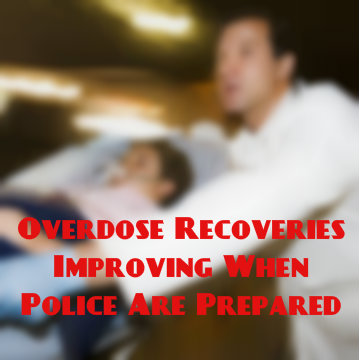 They discovered a range of personal attitudes among police officers toward drug users, as well as confusion about what treatment police officers are expected and authorized to perform at the scene of drug-related emergencies. Many police officers are equipped only with basic first aid and CPR training, and can do little to save the life of an overdose victim in critical condition.
They discovered a range of personal attitudes among police officers toward drug users, as well as confusion about what treatment police officers are expected and authorized to perform at the scene of drug-related emergencies. Many police officers are equipped only with basic first aid and CPR training, and can do little to save the life of an overdose victim in critical condition.
Some police officers revealed negative attitudes about people who use drugs, particularly repeat offenders. Others were empathetic toward those suffering from drug addiction but also expressed frustration with the lack of comprehensive treatment and other resources for drug addicts. Quite a few believed that the cycle of addiction had a significant negative impact on the individuals in their community as well as on the community as a whole. Many police officers in the study also revealed frustration about the limited training and resources they themselves have when responding to an overdose scene.
Frustration with the growing problem of prescription drug abuse and overdose is understandable. In 2010, more than 8.76 million people reported abusing prescription medicine, and in 2008, there were more than 36,000 deaths from drug overdoses, most of those caused by prescription drugs. In fact, prescription painkillers in the form of opioids are responsible for three quarters of all overdoses from prescription medications. Cocaine and heroin combined resulted in fewer overdose deaths than prescription opioids.
Giving Police Officers Tools And Training For Overdose
In some communities around the country, police officers and other responders are given Naloxone, which is the standard drug overdose antidote used by paramedics. Naloxone helps to reverse the effects of prescription opioids and to restore breathing for people in respiratory arrest. The current White House Office of National Drug Control Policy supports training more responders in the use of this tool and making it available to those in a position to be first medical responders.
The responses in the Rhode Island Hospital study suggest that police officers will be more effective in the role of first responders with increased training and improved understanding of their responsibilities. In more rural areas, police officers may be the only trained medical responders who are able to get to overdose victims during the critical window when Naloxone or other treatment methods are most likely to be effective.
Further empowering police officers to be more effective responders may also help to improve the relationship between law enforcement and the community in many areas. It may relieve some feelings of frustration and helplessness on the part of police officers by allowing them to have a more active role in saving lives. It may also improve community views on law enforcement when officers at the scene are able to administer life-saving aid. Some of the police officers interviewed during this study felt that the ability to administer Naloxone could be a critical element in positive police-community relations.
Read More About ER Visits Rising Due To Drug Use
05 Mar 2014
FDA Announces Plans To Limit Acetaminophen Use
The Food and Drug Administration (FDA) has asked healthcare professionals to stop prescribing high doses of the painkiller acetaminophen, which is used in Tylenol, Vicodin and Percocet.
The FDA hopes to reduce liver damage in patients taking high doses. Because many drugs contain acetaminophen, the chances of an inadvertent overdose for someone taking several different prescriptions are likely and very dangerous. Acetaminophen overdose is the leading cause of acute liver failure.
How Drug Makers And Pharmacists Will Be Affected
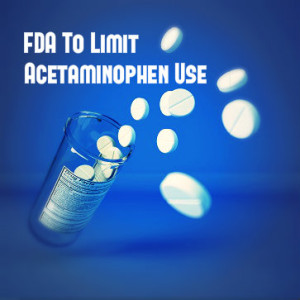 Drug makers are also being asked to consider limiting the amount of acetaminophen in prescription drugs to 325 milligrams or less per pill. Over half of drug makers have agreed. Another step the FDA has taken is recommending pharmacists who receive multiple prescriptions from doctors that, when combined, contain more than 325mg of acetaminophen per dose, contact the doctor who prescribed it and discuss other options.
Drug makers are also being asked to consider limiting the amount of acetaminophen in prescription drugs to 325 milligrams or less per pill. Over half of drug makers have agreed. Another step the FDA has taken is recommending pharmacists who receive multiple prescriptions from doctors that, when combined, contain more than 325mg of acetaminophen per dose, contact the doctor who prescribed it and discuss other options.
Are Over The Counter Drugs Included In FDA’s Limit Of Acetaminophen?
The FDA is also attempting to make drug makers take any drugs containing more than 325 mg of acetaminophen off the market. The warning issued by the FDA does not apply to Tylenol and other over the counter drugs… for now.
Acetaminophen And Alcohol – Dangerous Combination
The FDA explained there is no available data to show that more than 325 mg of acetaminophen provides additional benefits, but it does increase the risk of liver problems. When combined with alcohol, the effects of acetaminophen are even more dangerous. They also report that acetaminophen has been known to cause life-threatening skin reactions, including blisters, serious rashes and the detachment of the upper surface of the skin.
Preventing Acetaminophen Overdose
To decrease chances of overdose, individuals taking pain medications and other medications should read the labels of their prescriptions. The FDA maximum recommendation for adults is no more than 4,000 mg of acetaminophen a day.
Read More On The FDA Urges Public To Beware Of Phony Adderall Sold On The Internet
On Jan. 1, 2014, legal recreational marijuana sales began in Colorado, with remarkably little fuss. Long lines appeared at the 37 stores across the state—mostly in the Denver area—that were fully licensed in time for the New Year, but any worries that the crowds might become disorderly proved to be unfounded.
Law enforcement was a major presence around the newly licensed establishments throughout the day to ensure that the crowds did not get out of hand, and to check the establishments for compliance. Stores selling marijuana must check IDs to ensure each customer is 21 years of age or older, and to determine each customer’s state of residence. Under the new laws, Colorado residents are permitted to buy up to one ounce of marijuana, while out-of-state customers are permitted to buy up to one-quarter of an ounce.
Setting The Precedent Of Legalizing Marijuana
 Colorado is not just the first U.S. state to legalize the sale of recreational marijuana—it is the first state or city anywhere in the world to open stores officially licensed to sell recreational marijuana. Both Colorado and Washington voted to legalize marijuana in the November elections of 2012, but Washington stores will not begin selling recreational marijuana until later in 2014.
Colorado is not just the first U.S. state to legalize the sale of recreational marijuana—it is the first state or city anywhere in the world to open stores officially licensed to sell recreational marijuana. Both Colorado and Washington voted to legalize marijuana in the November elections of 2012, but Washington stores will not begin selling recreational marijuana until later in 2014.
As the months and years pass, Colorado will be the vanguard in other ways as well. The rest of the U.S. will be looking to Colorado to evaluate the success of the state’s regulatory measures that are designed to restrict marijuana sales to licensed establishments, and restrict marijuana purchases to people of legal age. Federal and state officials will be watching to see what effects marijuana legalization has on marijuana abuse and dependence, on underage use of marijuana and on the suddenly legitimate marijuana industry.
Some opponents of the legalization of marijuana fear that the marijuana industry could become a second “Big Tobacco”—an industry that earns huge profits by causing people to become addicted to their products.
Legalized Marijuana Prices
On Jan. 1st, most stores were charging $30 to $50 for an eighth of an ounce of marijuana, although some were charging slightly more. This is significantly higher than the price of legal marijuana in Colorado at the more than 300 dispensaries licensed to sell marijuana for medical purposes to people with a prescription.
Some stores had raised their prices for opening day, and others limited purchases to smaller amounts than the law’s limit for fear of running out of stock. Average prices may drop after the first months of sales and as the stores react to the market. However, legal buyers will still have to deal with an expense that has never before factored into recreational marijuana sales: taxes. Colorado has placed a 15 percent excise tax and a 10 percent sales tax on marijuana purchases, for a total of 25 percent of the cost of the purchase.
Some early customers did express dismay over the prices, and compared them negatively to the cost of purchasing marijuana from non-licensed sources. Even so, sales at the 37 stores across Colorado totaled more than $1 million on New Year’s Day alone, and more than $5 million in the first week.
Colorado has estimated that the marijuana industry could generate around $600 million in sales per year. The state expects to collect around $70 million in taxes from these sales.
Unique Challenges For Marijuana Retailers
While the new marijuana retailers were buoyed by the early sales, there are still many challenges for those in the legal marijuana business. Although the U.S. Department of Justice has decided not to interfere with recreational marijuana sales in Colorado and Washington, these retailers are still impacted by the federal ban on recreational marijuana sales.
Marijuana retailers are not able to get traditional services from banks (who fear criminal proceedings for money laundering), and do not qualify for federal tax write-offs that assist many small business. Furthermore, many establishments are limited to cash transactions because they are not able to accept credit cards. This can make them more vulnerable to robbery, and can make it more challenging to file taxes and manage the employee payroll.
Learn About The Pros And Cons Of Legalizing Marijuana
When Colorado’s new law legalizing the use of marijuana went into effect there were mixed feelings about the consequences. Some opponents of the legalization argue that more children will become addicted to the drug at a younger age. They also caution that marijuana is a “gateway drug” to harder drugs like heroin and cocaine, and that it is known to cause health and psychological problems. What are Colorado’s laws that will aid in controlling marijuana consumption, keeping it in the hands of responsible individuals who are of age?
The Laws And Ways Of Obtaining Pot
Colorado actually has two sets of marijuana laws on the books. The laws for recreational use went into effect on January 1, 2014, but medicinal use has been legal since November 7, 2000. Not only are there different laws but there are also different locations for obtaining pot, with medicinal users getting it from dispensaries and recreational users going to newly opened shops.
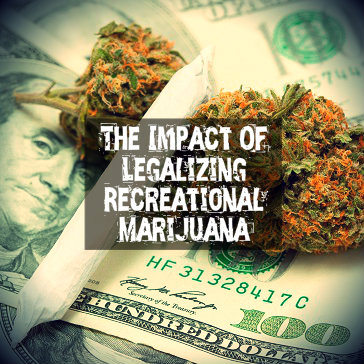 The main reason for the separate laws is the taxes levied against recreational users. Though medicinal users pay less taxes, they also have to get a Colorado Medical Marijuana Registry identification card, otherwise known as a “red card,” which costs $90 to obtain and to renew. (The price will be lowered to $15 in February 2014.)
The main reason for the separate laws is the taxes levied against recreational users. Though medicinal users pay less taxes, they also have to get a Colorado Medical Marijuana Registry identification card, otherwise known as a “red card,” which costs $90 to obtain and to renew. (The price will be lowered to $15 in February 2014.)
Colorado law bans the consumption of marijuana in public places, driving under the influence and taking the drug out of state. The state has also made it easier to win convictions against drivers who caused accident or injury while under the influence of drugs. The legal age of use is 21.
Recreational users can legally grow and possess up to six plants, up to one ounce of cultivated marijuana while traveling, and give a gift of up to one ounce to those 21 and up. Medicinal users can grow six plants as well, can possess up to two ounces of cultivated marijuana and can also gift up to an ounce to others who are at least 21.
Legal Marijuana Possibly Bringing In Big Bucks
Those who are celebrating the new law are optimistic about the revenue that the retail stores will generate. Research conducted by ArcView Market Research, a company that tracks data from the marijuana industry, reported that medical marijuana generated $1.4 billion in 2013. The researchers predict that number to grow to $2.34 billion in 2014, thanks to the new laws in Colorado and those in Washington, which will have its own law legalizing marijuana that will go into effect later this year. State officials predict that marijuana sales will generate an estimated $67 million in annual tax revenue.
Legal Marijuana’s Impact On Future Abuse And Addiction
Whether Colorado residents are for or against the legalization of marijuana, the impact of legalization on abuse and addiction could be seen for years to come.
Read More About The Pros And Cons Of Legalizing Recreational Marijuana And What It May Do For The Economy Of Our Country And The Health Problems Of Users


